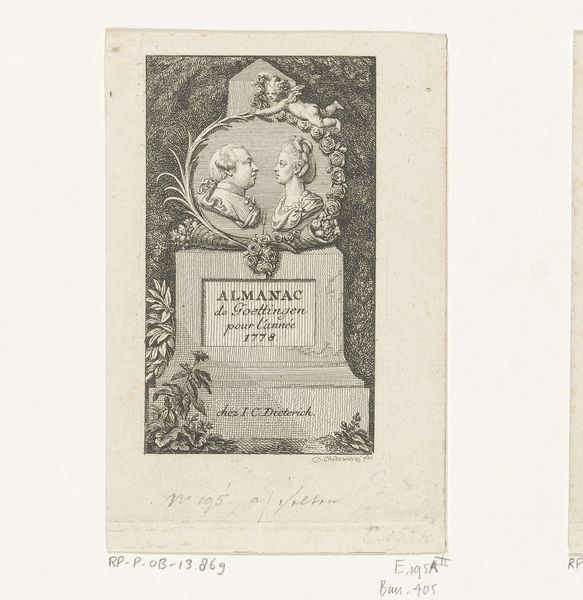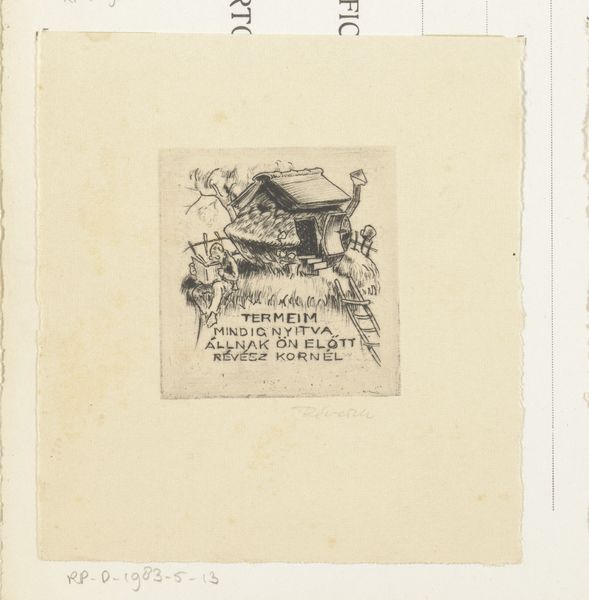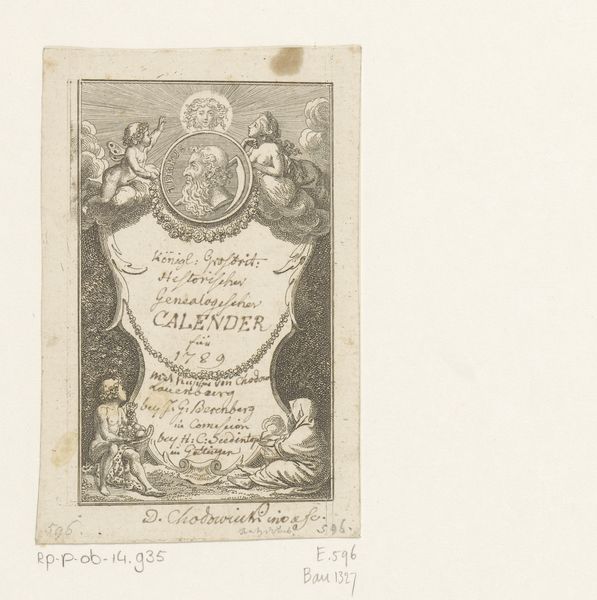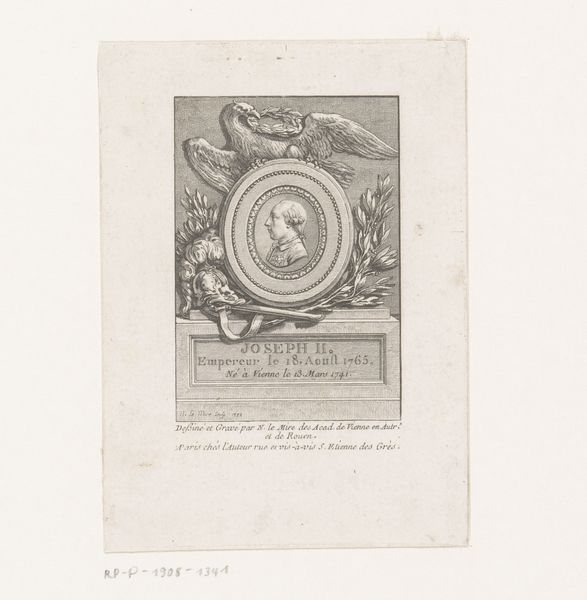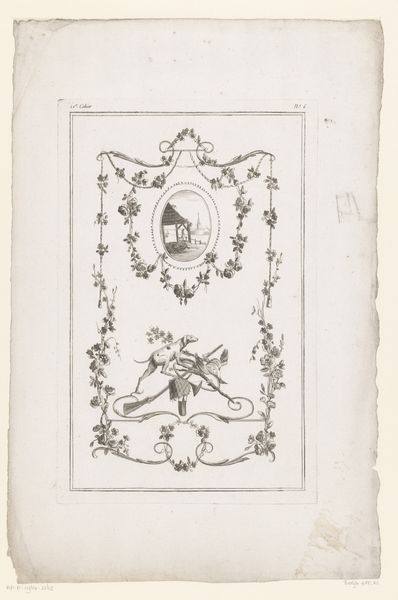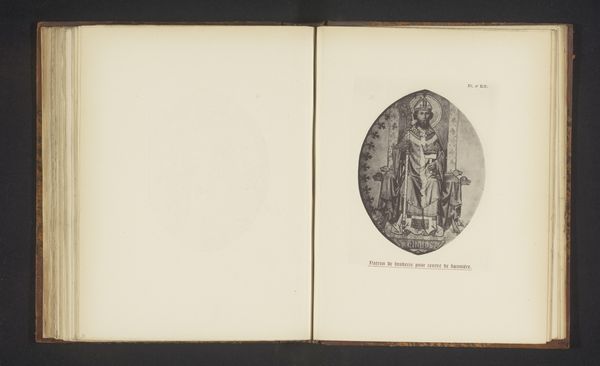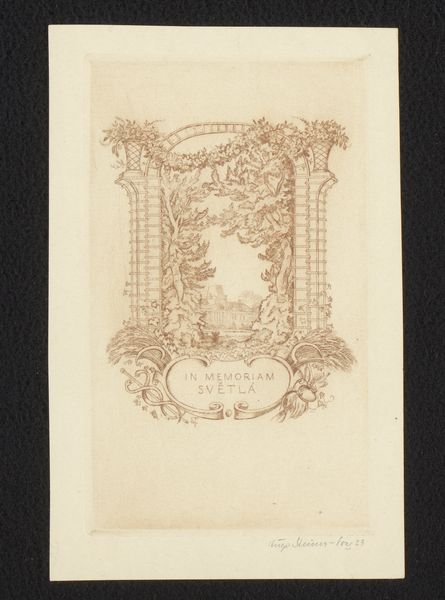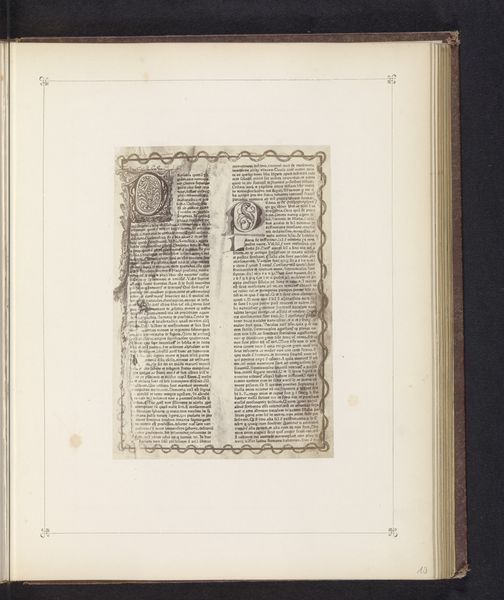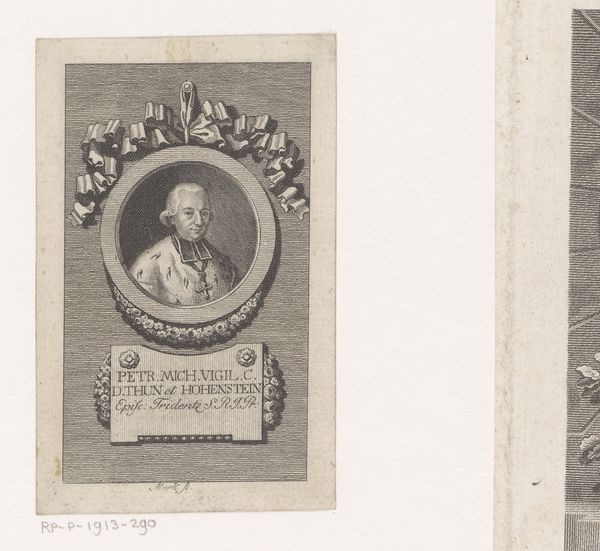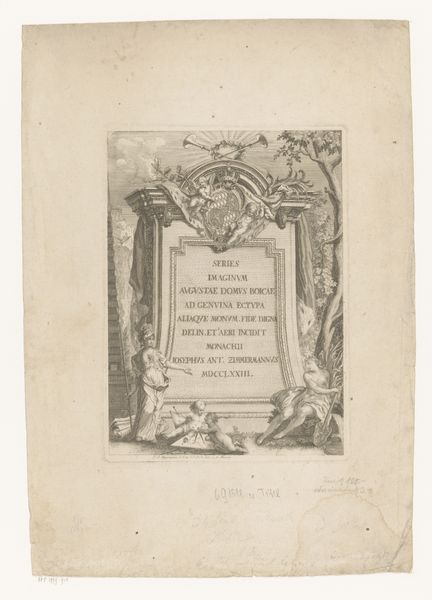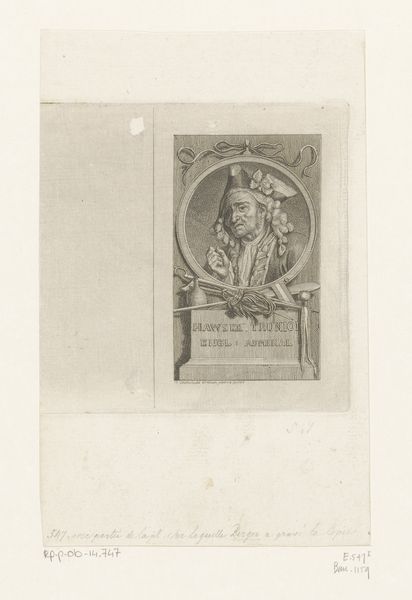
Portret van Elisabeth, prinses van het Verenigd Koninkrijk, Ierland en Hannover 1778
0:00
0:00
Dimensions: height 95 mm, width 57 mm
Copyright: Rijks Museum: Open Domain
Daniel Nikolaus Chodowiecki created this print of Elisabeth, Princess of the United Kingdom, Ireland, and Hannover, sometime around 1770. Its symbolic vocabulary reflects the social and political conventions of late 18th century Europe. The image of Princess Elisabeth isn't merely a personal likeness; it’s a carefully constructed representation of royal identity. The elaborate hairstyle and elegant presentation speak to the importance of image in maintaining social hierarchy. Created in the German states, then part of the Holy Roman Empire, the print is designed to circulate within a network of royal families, reinforcing ties through visual representation. Note how the image of the princess is framed by a garland, a reference to classical antiquity. Historians can consult sources such as court documents, fashion plates, and political pamphlets to better understand the print's role in shaping public perception. By examining its cultural context, we can move beyond aesthetics and reflect on how art actively participates in the construction of social meaning.
Comments
No comments
Be the first to comment and join the conversation on the ultimate creative platform.

